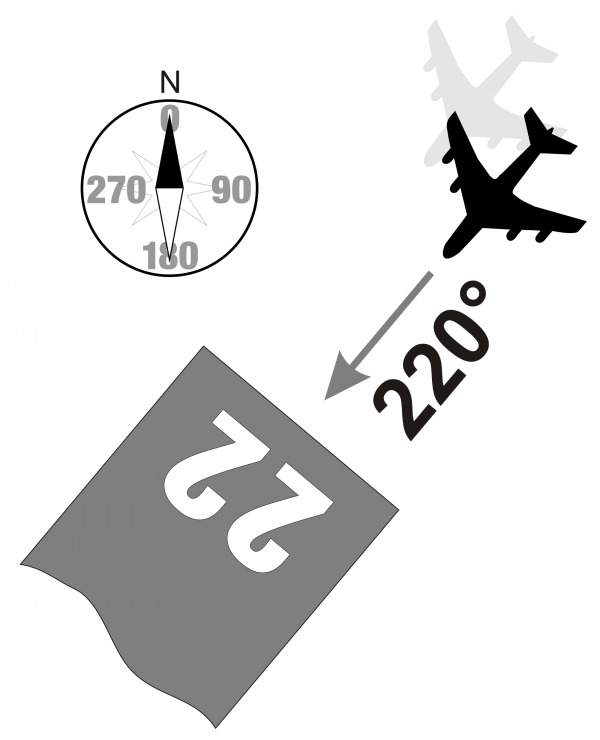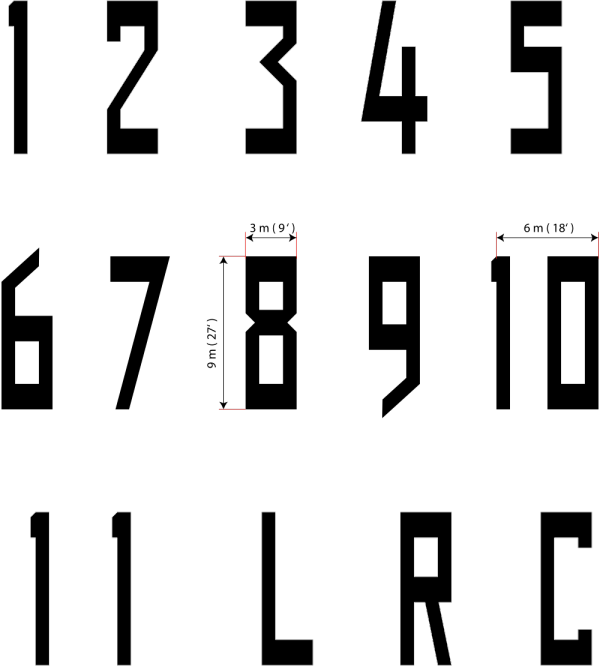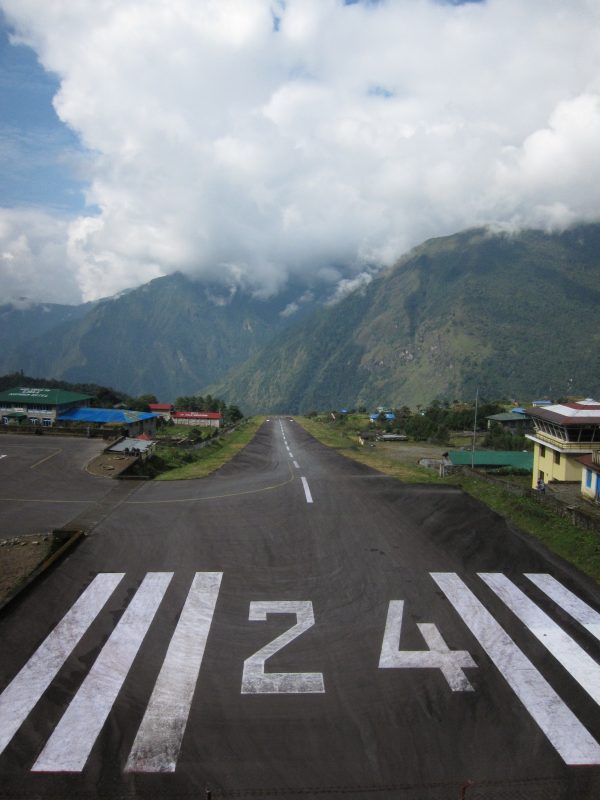Runways feature a lot of design details, but one in particular is both easy to miss (as you fly right over it) yet also hard to decode: their unique numbers. Public and military airfields alike feature numeric designations at either end of each runway, but what do they mean?
“All runways are numbered based on the magnetic azimuth (compass bearing) in which a runway is oriented,” explains Dave Dargie, Aviation Infrastructure Sector Lead at Stantec. But that seems strange at first glance, since the numbers are too short to represent 360 degrees.

The solution is to drop a digit, rounding the compass bearing by ten degrees so you end up with a range from 1 to 36. By extension, the opposite end of any given runway (180 degrees away) will be plus or minus 18 (e.g. 08 in one direction and 26 in the other).

When multiple runways operate in parallel, an additional designation is added to distinguish between them. For example, 08L-26R and 08R-26L would be used for 08-26 “left” and “right” (relative to the direction the plane is facing) while a C is added for center ones (in cases of three). In rare instances where four runways run in parallel, there is no fourth designation — instead, one number is shifted by 10 degrees (1 digit).

“During airport operations,” Dargie continues, “runway number designations are pronounced individually. For example, Runway 4L-22R would be [expressed] by air traffic control as ‘Flight 123, you are cleared to land on Runway Four Left’ or alternatively ‘…Two Two Right,’ if cleared to land the opposite direction. This level of enunciation ensures clear communication and enhances safety.”

One might expect airports to simply line up all their runways for simplicity, but ideal orientation is based on prevailing winds, and these can shift. As a result, many airports feature runways running at different angles to allow airplanes to align better with the wind. Of course, not all airports are large enough to accommodate this.

Notably, the FAA rechecks their numbers every five years, because periodic shifts in magnetic north can cause them to change over time.
There are a few exceptions to the universality of this system — one of which applies to aircraft carriers. Since ships in the water are mobile and can face in any direction, no numbering system would make consistent sense on their landing strips. Instead, carriers align with the wind in order to make takeoffs and landings easier for pilots. Numbers may also be absent from temporary or rural landing strips.

In most cases, though, designations are standardized. This allows pilots from anywhere in the world to quickly decipher digits, regardless of what airport they find themselves landing in or taking off from.



Comments (5)
Share
Three metres is nine feet ten inches, safer to round up to ten feet than down to nine.
O’Hare Airport in Chicago has a plan to have six parallel east-west runways and two northeast-southwest runways. The six parallel are labelled (if you’re facing west) 28L, C, & R and 27L, C, & R. The other two that are diagonal are apparently for crosswind. Simply amazing how much traffic they can hold. Unfortunately, the difficulty comes with the long taxi trips to and from the runway and the gate. Also the amount of space taken up by these runways have caused the need for additional expressways even though there is only one entrance at I-190. IDOT widened I-90 and is planning on building I-490, a route that would replace York Rd, the western border of the airport. So they’ll have I-90, I-190, I-290, Illinois-390, and I-490. Too bad I-390 was taken by New York state.
New York State also has an I-190 and I-290. Both in Buffalo. Three-digit auxiliary interstate designations can be used in more than one distinct location in the USA.
An example 4L – 22R is a bit confusing. It must be 14L – 22R, seems to me.
40 degrees is the opposite 180 degrees direction to 220. 140 would be almost perpendicular to 40-220 line.